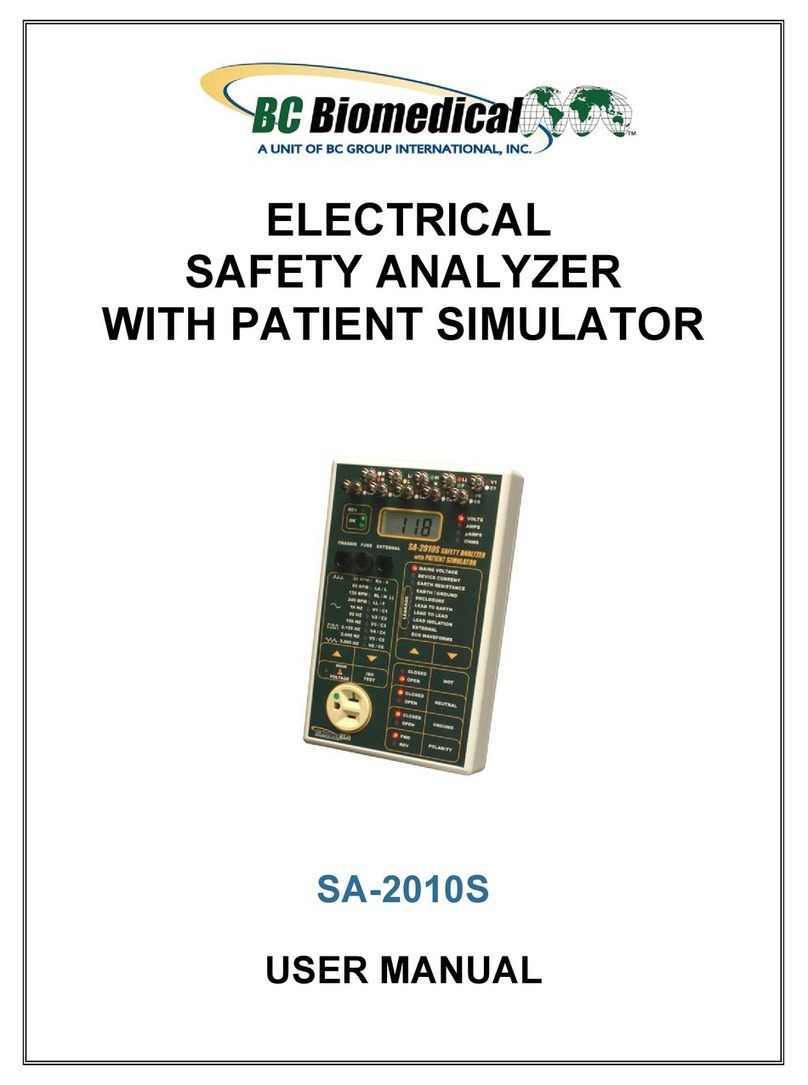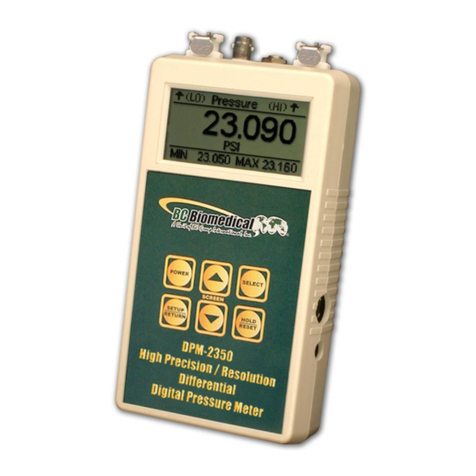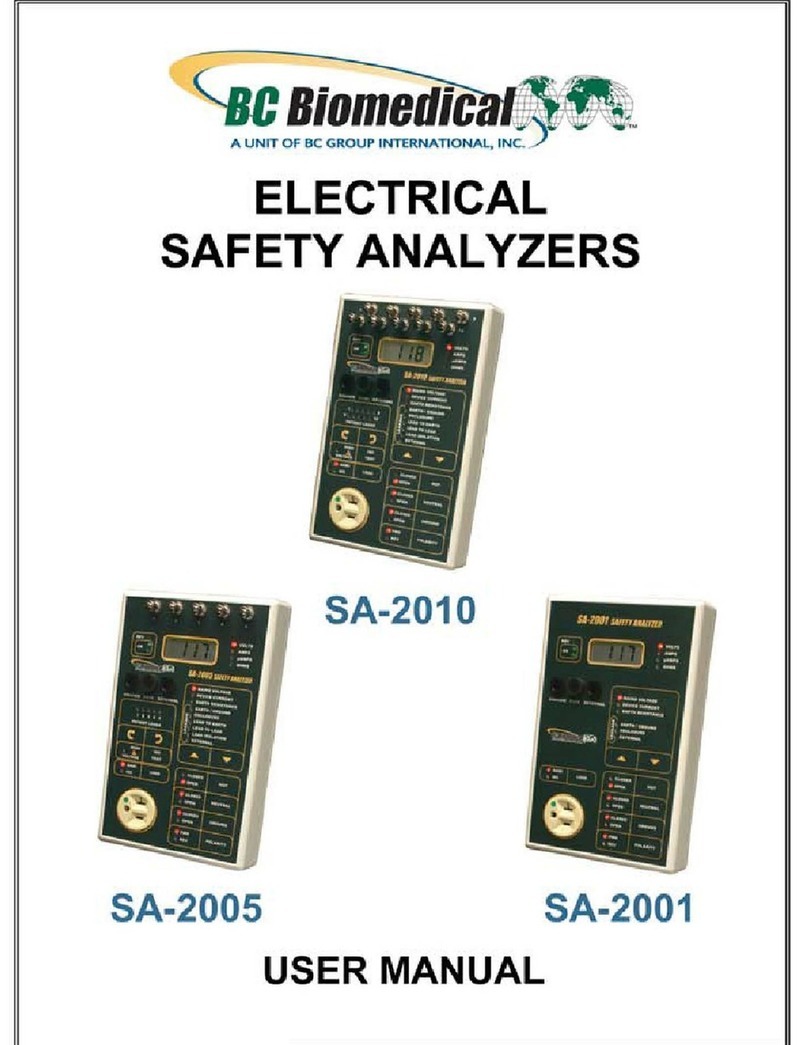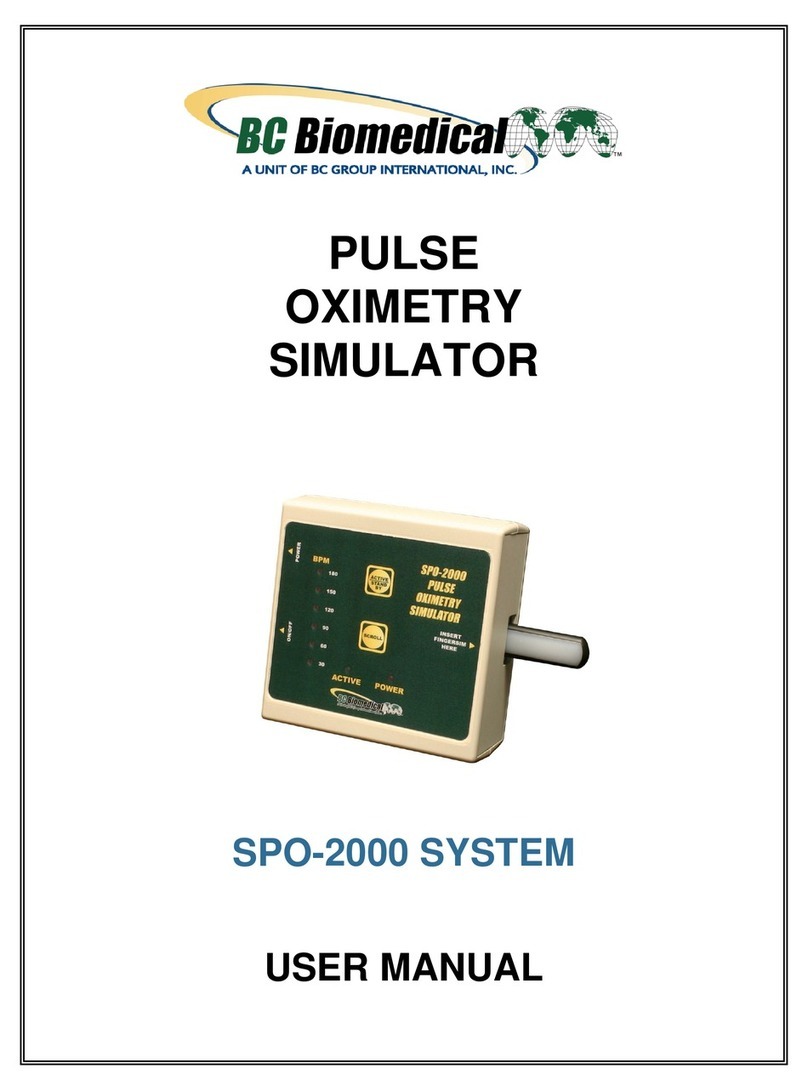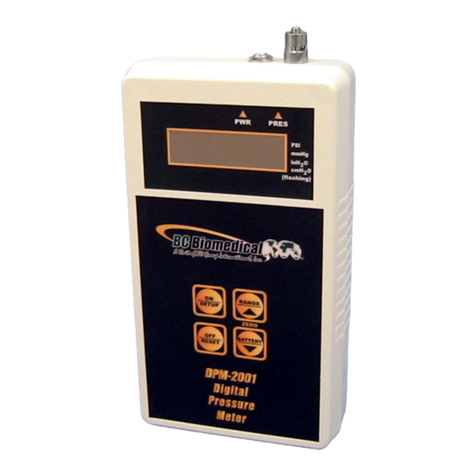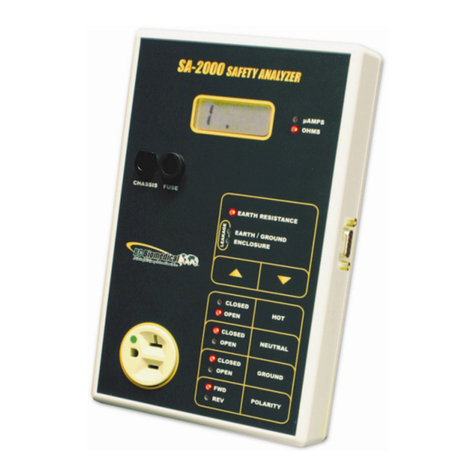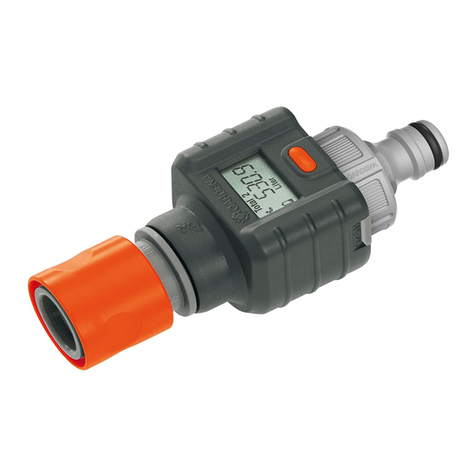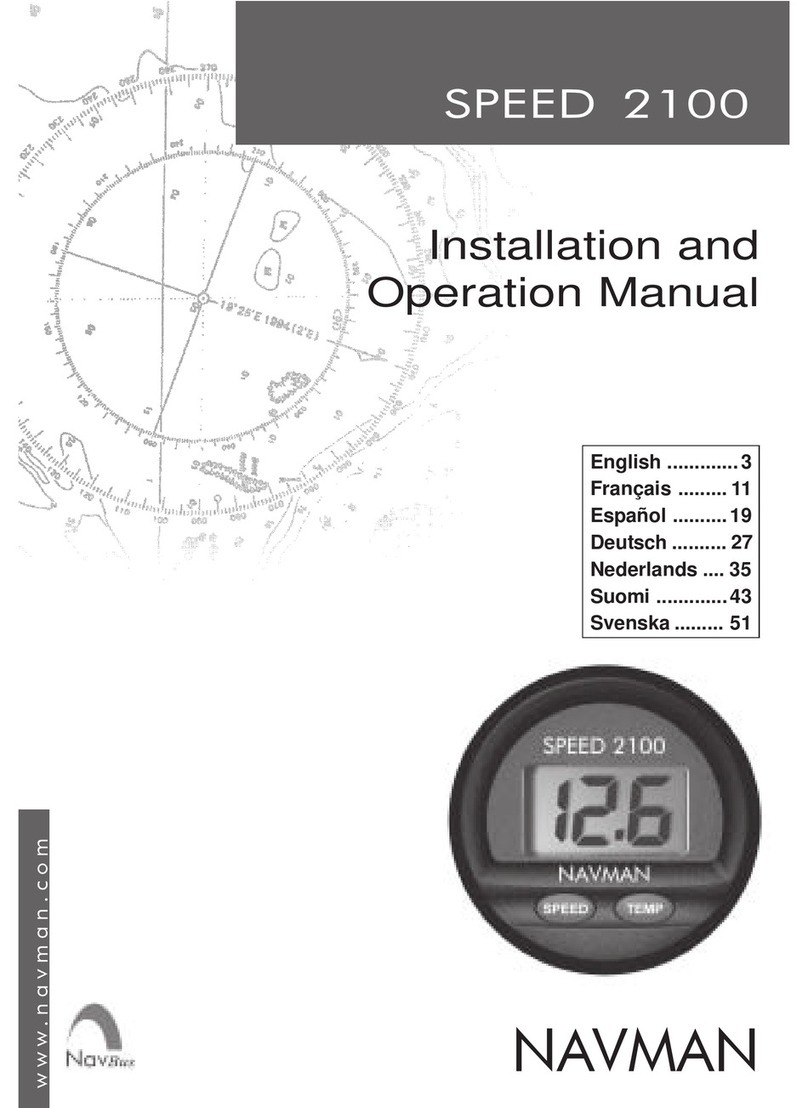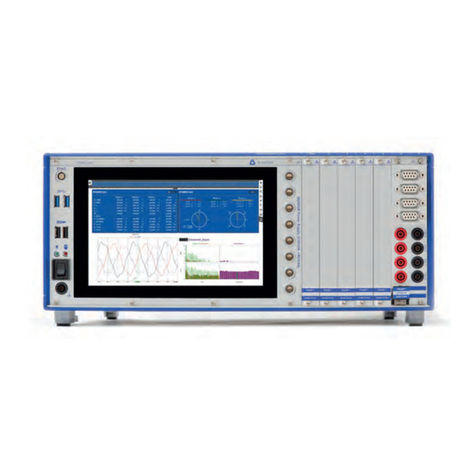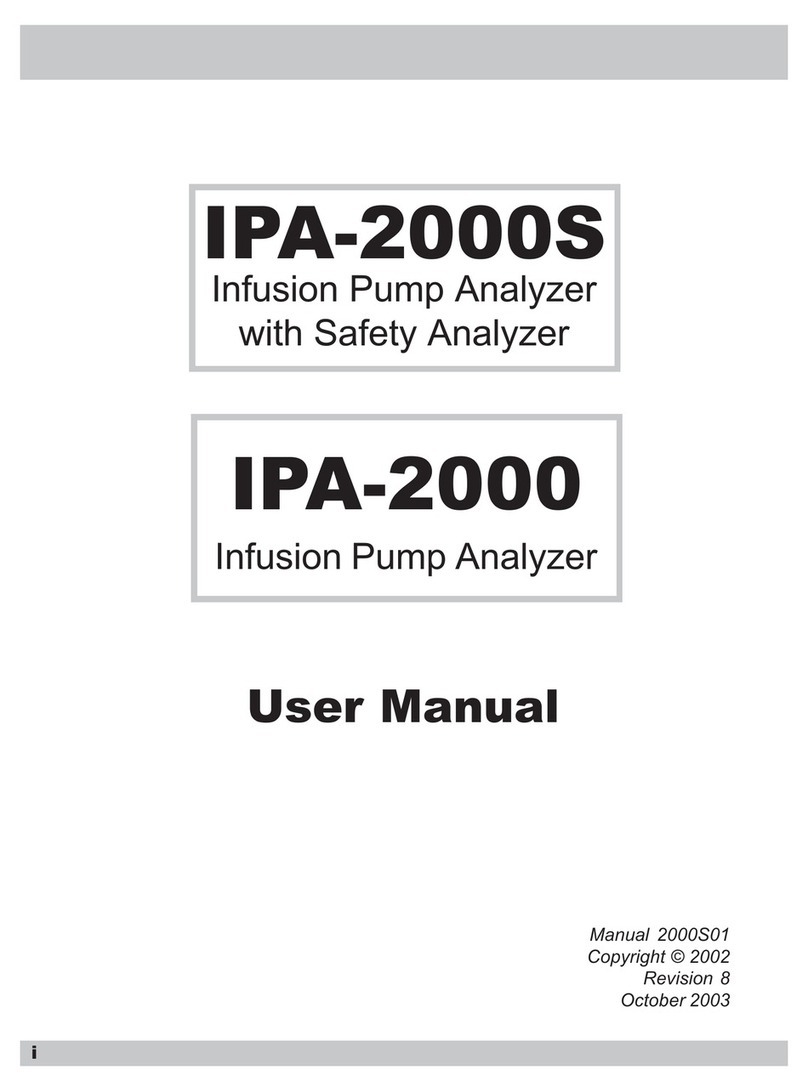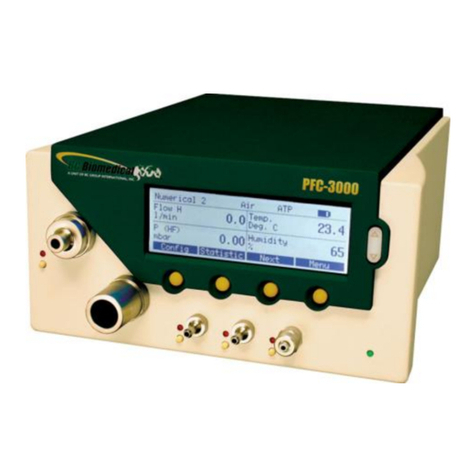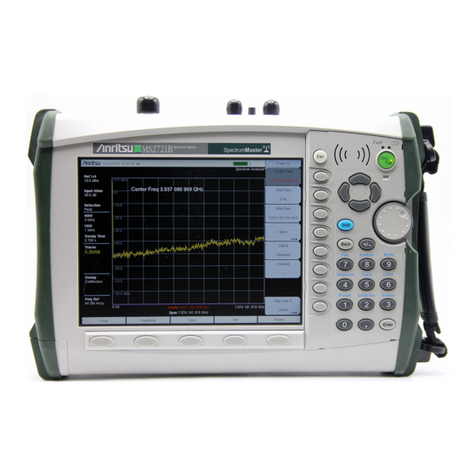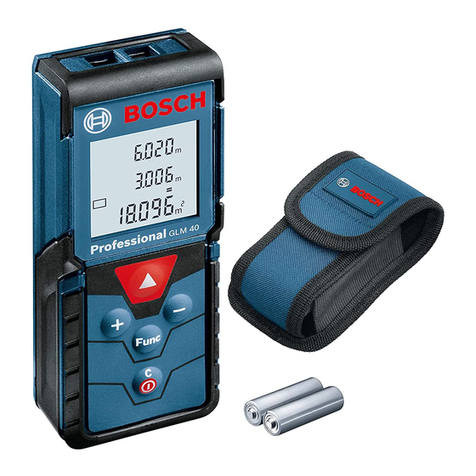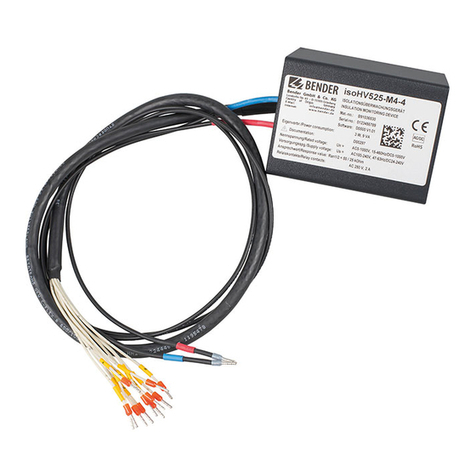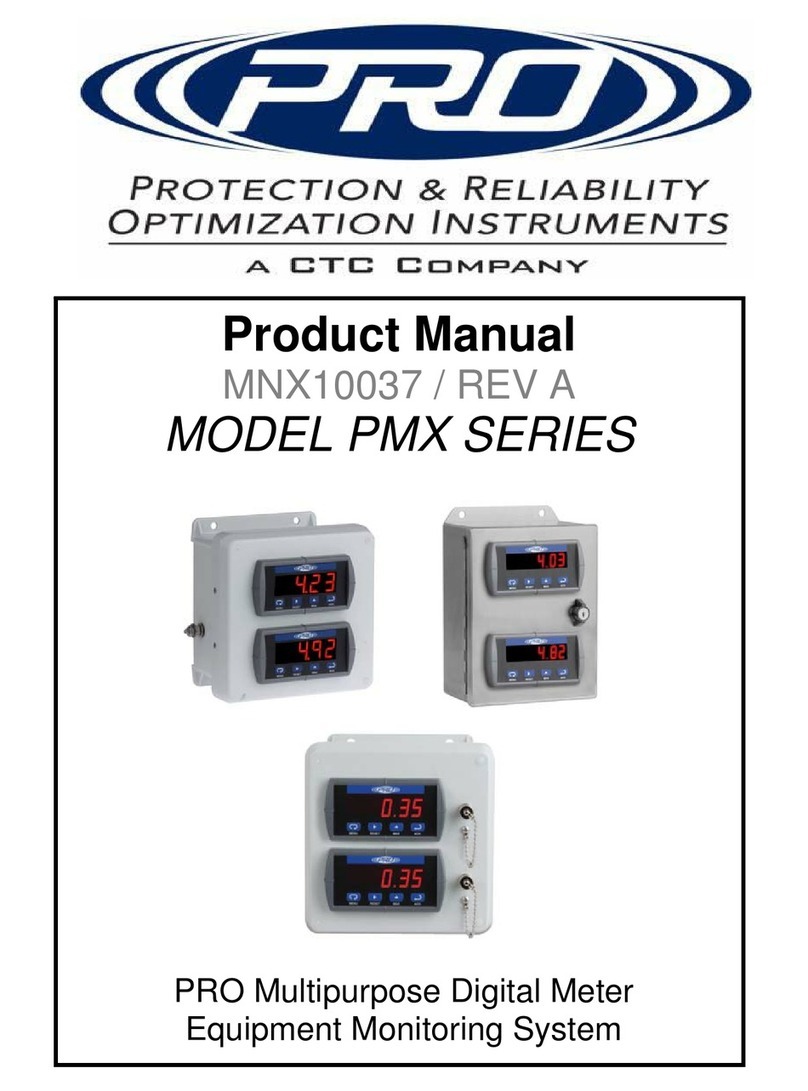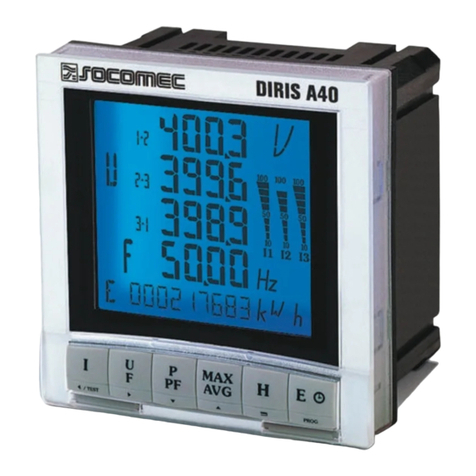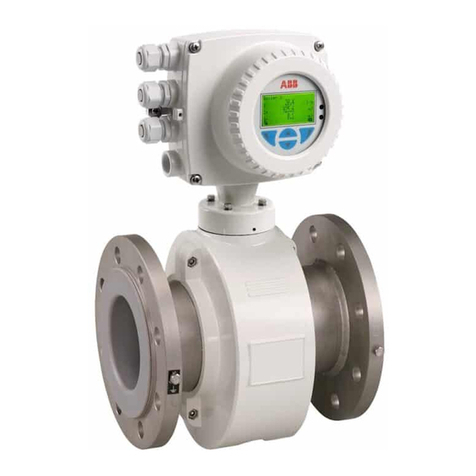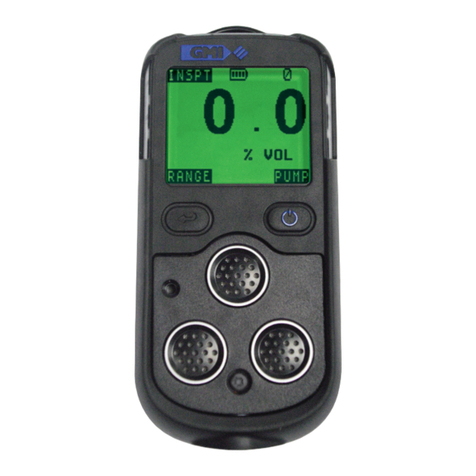
5
OPERATING PROCEDURE
1. Remove the top of the carrying case by unlatching the clamps located on two ends.
The USP-100A is mounted on the base of the carrying case.
2. Place the USP-100A on a stable and level surface. Avoid air currents and mechanical
vibrations. Level unit as much as possible.
3. Loosen the positioning clamp and position out of the way, remove cone target from the
clips on the table tube and test tank where it is normally stored. Tank is positioned on the rubber
circle.
4. Fill the test tank to ¼ inch below the top of the rubber liner with recently de-gassed water
at room temperature. (To obtain de-gassed water, boil distilled water for 20 minutes, fill a jar
completely, cover, and allow to cool).
5. Plug the AC Adapter into a 120 VAC, 60 Hz power outlet and plug it into the power jack
at the rear of the unit. Depress the On/Zero/Off button.
6. Lower the cone target into the concentric target support sleeve located to the back/left of
the test tank (small tube inside of larger tube ), while simultaneously placing the cone target into
the tank. If the cone can swing in an arc, it is not down far enough. Tip the rod back and forth
slightly to fully engage the rod. Press the On/Zero/Off button.
7. By means of the positioning clamp, attach the transducer head and place its radiating face 1/8”
to 1/4” inch below the water level, parallel to the water surface, and directly above the center of
the cone. Check transducer surface for uniform wetting (no air pocket or bubbles should be on
its surface).
8. Allow 5 minutes for the scale to stabilize. With no ultrasonic power applied to the transducer,
press the On/Zero/Off button to zero the unit.
9. Check response by placing the 1 gram weight on the arm of the cone target (the flat part that is
out of the water). The USP-100A should read 1.00 grams ± 0.1. Change the units to the watts
mode by pressing and holding the Print/Unit button until the unit desired is displayed then
release. The USP-100A should read 14.6 watts ± 0.2 watts. 1 gram is equal to 14.6 watts.
10. Remove the 1 gram weight. Press the ON/Zero/Off button to zero the unit.
11. Apply power to the Transducer Under Test (TUT). Re-zero before each measurement and take
your power reading when the display has stabilized. It is a good practice to take three readings
and average them. If measurement conditions are not stable, use the grams mode and multiply
the readings by 14.65 to obtain watts.
12. Determine the maximum peak power with the maximum duty cycle and pulsed output settings
with the equation:
PAVE = Pp ÷ Rtpa
PAVE= calculated average power
Pp= Peak Pulsed Power Setting on unit under test
Rtpa= Ratio of Temporal Peak to Average Power
(from each manufacturer)
13. To calculate the watts/cm
2
output, take the total watts reading from the unit and divide by the
area. The area is πd
2
÷ 4 (d is the diameter of the transducer) if the transducer is smaller than
the cone. Otherwise, use (8.2 cm) the cone’s diameter as the area.
14. When finished, unplug the USP-100A, empty the tank, and place the dry target cone in the tank
for protection.




















